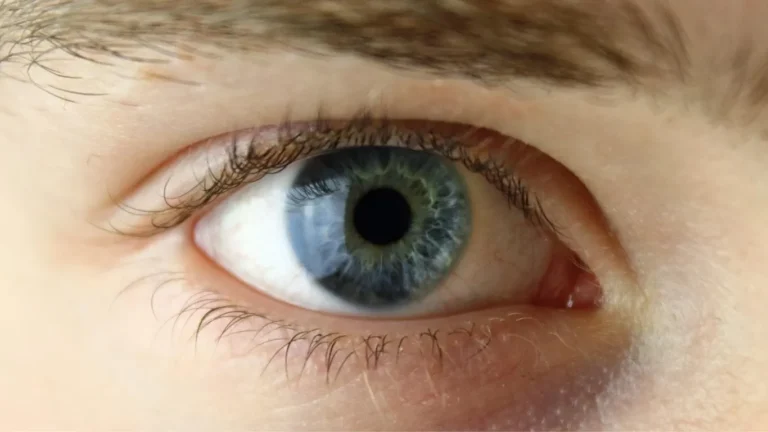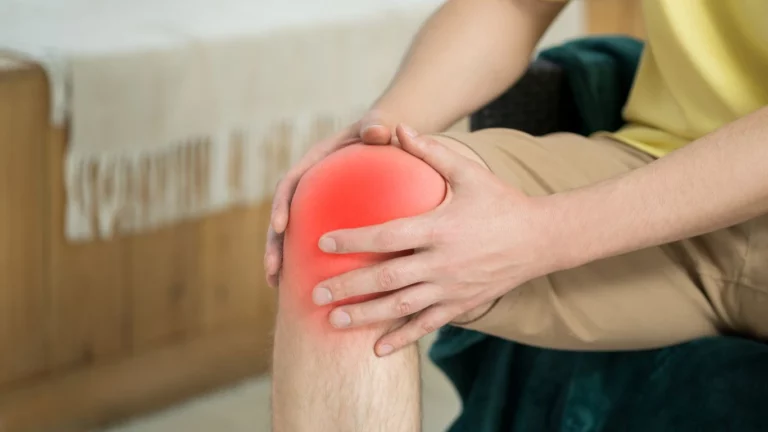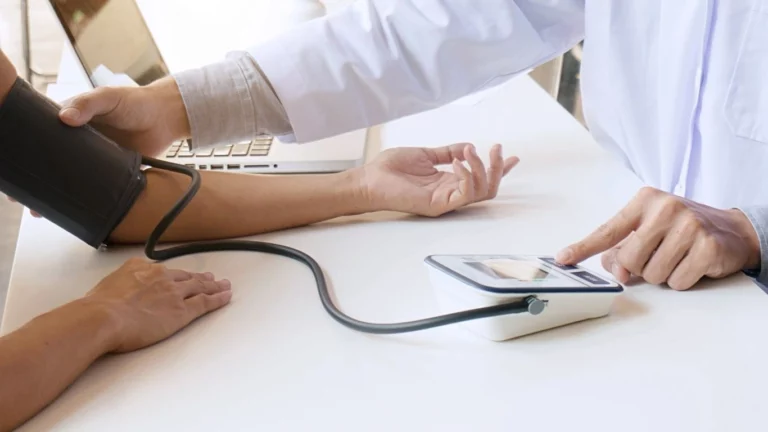How Meditation Helps Manage High Blood Pressure: A Stress-Free Solution
Managing high blood pressure is something I’ve worked with for years. As a hypertension expert, I can tell you that many patients struggle with the same question: “What can I do beyond medication to control my blood pressure?” Well, let me tell you, one of the most powerful tools at your disposal is something that doesn’t require a prescription—meditation. In fact, how meditation helps manage high blood pressure is a topic that’s been gaining a lot of attention, and for good reason.
This simple practice can be an incredible addition to your hypertension management routine. So, how does meditation actually help with controlling high blood pressure? Let’s dive into the science, the benefits, and how you can get started.
What is Meditation and Why Does it Matter for High Blood Pressure?
Before we get into the nitty-gritty of how meditation impacts your blood pressure, it’s important to understand what meditation is and why it’s so effective. At its core, meditation is a mental practice designed to encourage mindfulness, focus, and relaxation. For some, it may look like sitting quietly, focusing on your breath, or repeating a calming phrase. For others, it might be a more guided practice that involves visualization or deep breathing exercises.
But why does this simple practice have such a powerful effect on the body? Well, it’s all about stress. When you’re stressed, your body releases hormones like cortisol, which trigger your “fight or flight” response. This leads to increased heart rate, blood vessel constriction, and elevated blood pressure. However, when you meditate, your body enters a relaxed state that helps counteract those stress hormones and brings your nervous system into balance. Over time, this can help lower your blood pressure and reduce the strain on your cardiovascular system.
Understanding the Connection Between Stress and High Blood Pressure
Stress and high blood pressure are more closely related than you might think. In fact, one of the most common causes of hypertension is chronic stress. When you’re constantly feeling under pressure—whether it’s from work, family, or health issues—your body remains in a state of tension. This tension puts constant strain on your heart and blood vessels, leading to the narrowing of arteries and, over time, elevated blood pressure levels.
But here’s the thing: you can’t always eliminate the sources of stress in your life, right? Whether it’s a tough job or family responsibilities, some stress is inevitable. That’s where meditation comes in. By practicing meditation regularly, you can train your body to handle stress more effectively and keep your blood pressure levels in check, even when life throws you a curveball.
How Meditation Helps Lower Blood Pressure: The Science Behind It
Let’s break down how exactly meditation works to lower blood pressure. There’s a growing body of research supporting the link between mindfulness practices and cardiovascular health. Here are a few key ways that meditation can directly impact your blood pressure:
- Activation of the Parasympathetic Nervous System: Meditation activates the parasympathetic nervous system, which is responsible for the body’s “rest and digest” functions. When this system is activated, your heart rate slows down, your blood vessels dilate, and your blood pressure decreases.
- Reduced Stress Hormones: As mentioned earlier, meditation helps lower cortisol levels in the body. Lower cortisol means less stress and less strain on your cardiovascular system, which leads to lower blood pressure.
- Improved Blood Flow: Studies have shown that meditation helps improve blood flow, which can reduce the pressure within your arteries and help regulate your overall blood pressure levels.
For those of you who are more science-minded, there’s plenty of evidence supporting the idea that regular meditation can help reduce both systolic and diastolic blood pressure. For example, a study published in the American Journal of Hypertension found that participants who practiced mindfulness meditation for eight weeks showed significant reductions in their blood pressure readings. This isn’t just fluff—there’s real data behind it.
Types of Meditation Effective for Blood Pressure
Not all meditation practices are created equal when it comes to managing hypertension. There are several forms of meditation, but some stand out for their ability to target stress reduction and improve cardiovascular health. Here are some types of meditation that may be particularly beneficial for managing high blood pressure:
- Mindfulness Meditation: This is perhaps the most popular form of meditation. It involves paying attention to the present moment without judgment. Mindfulness meditation helps you stay grounded, reduces anxiety, and promotes relaxation—ideal for lowering blood pressure.
- Transcendental Meditation: In this form of meditation, practitioners repeat a specific mantra to help calm the mind and reduce stress. Some research has shown that transcendental meditation can lead to significant reductions in both systolic and diastolic blood pressure.
- Guided Meditation: If you’re new to meditation, guided meditation can be a great place to start. With guided meditation, you’re led through a process by an instructor or a recording. This can help you focus your mind and reduce anxiety, which in turn helps lower blood pressure.
It’s important to note that the benefits of meditation don’t require you to be a meditation guru. Even just a few minutes a day of focused breathing or mindfulness can make a real difference. Consistency is key here—over time, your body will become more adept at shifting into a relaxed state, helping to keep your blood pressure in check.
Starting Your Meditation Practice: Tips for Beginners
If you’re new to meditation and wondering where to start, don’t worry—it’s not as complicated as it might seem. Here are some simple tips to help you begin your practice:
- Start Small: If the idea of meditating for 20 minutes seems overwhelming, start with just 5 or 10 minutes. Even short sessions can help you begin to reap the benefits of meditation.
- Find a Comfortable Space: Choose a quiet spot where you won’t be disturbed. It’s important to feel relaxed in your environment to make your meditation more effective.
- Focus on Your Breathing: One of the simplest forms of meditation involves paying attention to your breath. Try to inhale deeply and slowly through your nose, then exhale slowly through your mouth. Focus on the rhythm of your breath, and if your mind starts to wander, gently bring it back to your breathing.
- Be Patient: Meditation is a skill that takes time to develop. Don’t get discouraged if it feels difficult at first. The more you practice, the easier it will become.
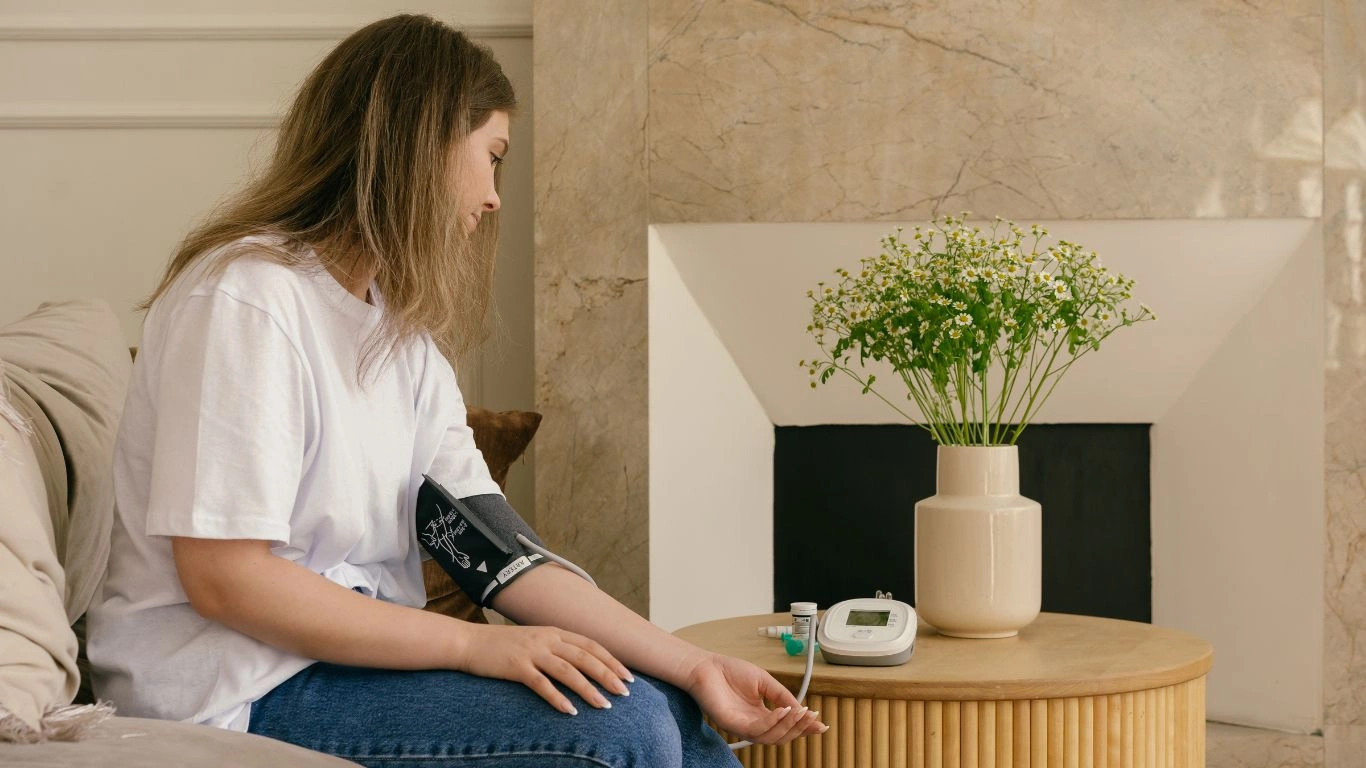
Starting your meditation journey might feel a little awkward at first, but trust me—it’s worth it. Whether you’re looking to lower your blood pressure or just find a little more peace in your daily routine, meditation can be a game-changer. The science is clear: meditation helps manage high blood pressure, and it’s something that anyone can incorporate into their lifestyle.
How Meditation Can Complement Traditional Blood Pressure Treatments
Now, while meditation is an incredible tool for managing high blood pressure, it’s not a replacement for traditional medical treatments. As much as I believe in the power of mindfulness and relaxation, high blood pressure still requires a holistic approach that may include medication, lifestyle changes, and monitoring. But here’s the good news—meditation can play a vital supporting role in lowering blood pressure, alongside other treatments.
In my practice, I’ve seen firsthand how patients who incorporate stress-reduction techniques, like meditation, into their daily routines tend to experience better outcomes with their blood pressure control. It’s all about reducing the strain on your heart and blood vessels, which, over time, can help you manage hypertension more effectively. And if you’re already on medication, meditation can work synergistically with your prescribed treatments to enhance the overall results.
Reducing Anxiety and Preventing Blood Pressure Spikes
If you have high blood pressure, it’s not just about the “normal” readings—it’s also about the spikes. We all experience moments when our blood pressure surges: a stressful work situation, a heated conversation, or even a long day of running errands. These spikes, especially when frequent, can really take a toll on your cardiovascular health.
What’s interesting about meditation is that it helps train the body to handle these stressful moments with more grace. In my experience, patients who meditate regularly report feeling calmer in tense situations. Instead of that immediate stress response (the racing heart, tight chest, etc.), they can breathe through it and regain control much quicker. This has an immediate impact on blood pressure. It’s like the body’s natural reset button!
For example, let’s say you have a stressful work deadline coming up, or you’re dealing with a family issue. Instead of letting your body go into full “fight or flight” mode, which raises your heart rate and blood pressure, you can use meditation techniques to calm your nervous system down. Even just taking a couple of minutes to breathe deeply can make a world of difference. This can help prevent those sudden, dramatic spikes in blood pressure, keeping things stable over time.
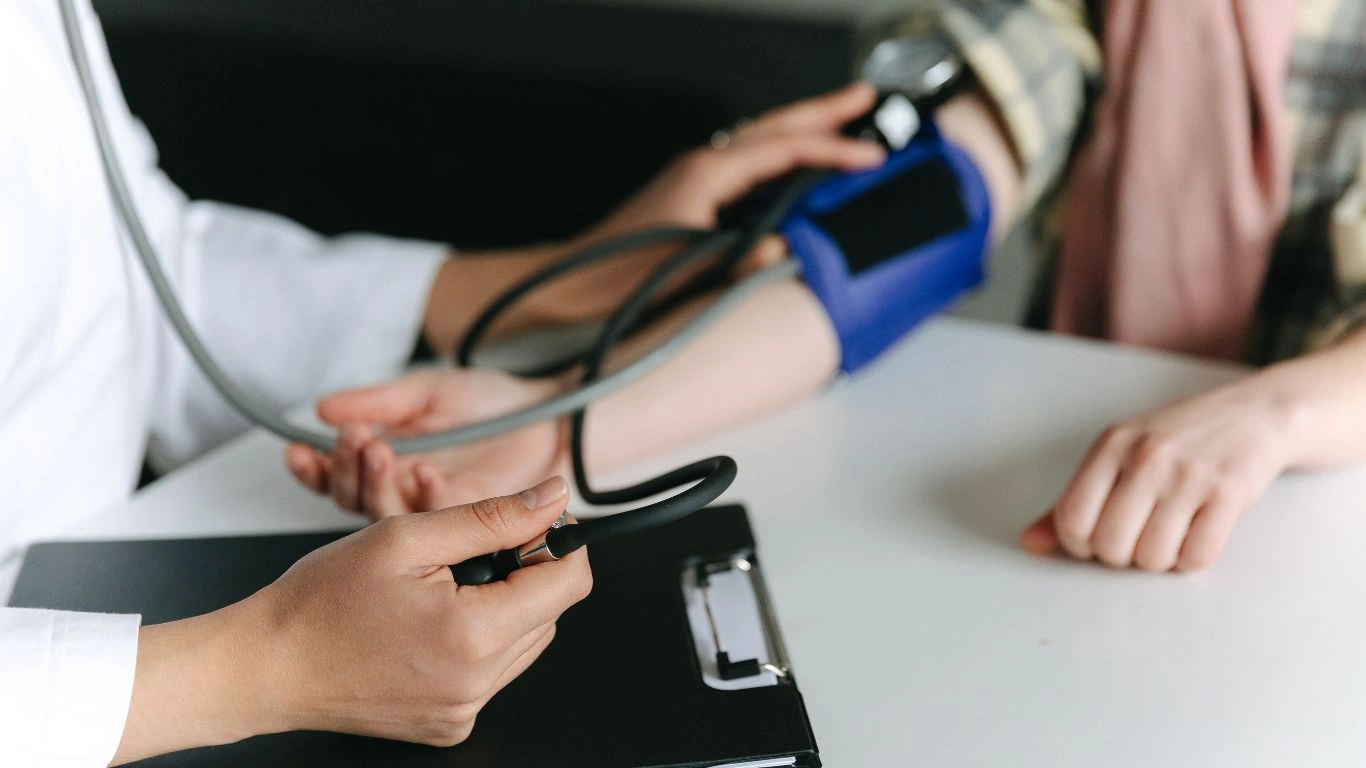
The Long-Term Benefits of Meditation for Blood Pressure
Over time, the benefits of meditation are cumulative. If you stick with it, you’ll start to see real, lasting changes in both your physical and mental health. This is why I’m always encouraging my patients to make meditation a part of their regular routine. It’s not just a quick fix—it’s a sustainable approach to health.
One of the key long-term benefits of meditation is its ability to help maintain a lower baseline blood pressure. Many of my patients who have committed to regular meditation practices report that their blood pressure readings have gradually improved, sometimes even to the point where they’ve been able to reduce their reliance on medications. Now, I always recommend working with your healthcare provider to adjust any medications, but meditation can definitely be a powerful ally in keeping blood pressure levels stable over the long term.
Mindfulness Meditation: A Game Changer for Lifestyle-Related Hypertension
Another thing I’ve noticed is that people who practice mindfulness meditation also tend to make better lifestyle choices. They become more in tune with their body and its needs. It’s like meditation opens up this channel for self-awareness, where you become more attuned to how your body reacts to different foods, activities, and stressors.
For those of you who have hypertension due to lifestyle factors—whether it’s poor diet, lack of exercise, or being overweight—mindfulness meditation can help shift your mindset. It encourages you to live in the present moment and to be more mindful of your decisions. I’ve had patients tell me they’re more motivated to eat healthy or take a walk after they’ve spent some time meditating. This kind of lifestyle shift is crucial for managing blood pressure over time.
Studies have found that mindfulness meditation, specifically, is linked to improved self-control and a greater focus on health-conscious decisions. In fact, one study published in The Journal of Clinical Psychology revealed that participants who practiced mindfulness regularly not only saw reductions in their blood pressure but also had improved cholesterol levels and lower body weight. All of these factors contribute to better heart health.
Using Meditation for Better Sleep and Blood Pressure Control
If you’ve been struggling with sleep issues, I’ve got some good news—meditation can also improve your sleep, and this has a direct impact on your blood pressure. Sleep deprivation is a common issue for people with high blood pressure. Not getting enough restful sleep can trigger increased levels of stress and inflammation, which in turn raises blood pressure. It’s a vicious cycle.
What I’ve found in my practice is that patients who meditate before bed tend to sleep better, which helps lower their stress levels and, as a result, their blood pressure. Meditation, especially deep breathing exercises or progressive muscle relaxation, can calm the mind and prepare the body for sleep. It helps reduce the racing thoughts that often keep people awake and can relax the muscles, which lowers overall tension in the body.

One simple technique I recommend for sleep is the body scan meditation. It’s easy to do, and you can do it right before bed. It involves mentally scanning your body from head to toe, focusing on each area and releasing tension as you go. This helps your body relax and signals that it’s time for rest. The best part? It’s totally free, requires no special equipment, and can be done anywhere. If you make this a regular practice, you’ll find that your quality of sleep improves, which can have a big impact on your blood pressure.
Can Meditation Replace Medication?
Now, I want to clarify that while meditation is a powerful tool for managing blood pressure, it doesn’t replace the need for medication in all cases. For some people, particularly those with severe hypertension, medication is absolutely necessary to get their blood pressure under control. But, if you’re able to incorporate meditation into your routine alongside other treatments, it can complement your efforts and possibly reduce the need for more aggressive interventions down the line.
That being said, always talk to your healthcare provider before making any changes to your treatment plan. I’ve seen many patients successfully reduce their blood pressure with a combination of meditation, lifestyle changes, and, when necessary, medication. It’s all about finding a balance that works for you.

So, as you can see, meditation is not just a “feel-good” activity—it has real, scientifically-backed benefits for controlling high blood pressure. Whether you’re looking to lower your stress, improve your sleep, or simply create a more balanced approach to health, meditation can play a vital role in managing hypertension.
Incorporating Meditation into Your Daily Routine for Maximum Benefits
Now that you’re convinced about how meditation helps manage high blood pressure, the next question is: “How do I fit this into my daily routine?” I completely get it—life is busy, and it can seem like there’s never enough time for another new habit. But trust me, adding just a few minutes of meditation each day can make a world of difference when it comes to lowering your blood pressure and improving your overall well-being.
From my experience, the key to success is consistency. Meditation doesn’t have to be a long, drawn-out process—5 to 10 minutes a day can be incredibly effective. And the best part? You don’t need to do it at a specific time of day, nor do you need any special equipment. You can meditate while sitting at your desk, lying down before bed, or even on the go.
Starting Small: Setting Realistic Goals for Meditation
If you’re new to meditation, I suggest starting small. Don’t pressure yourself to sit in silence for an hour on day one—that’s a surefire way to burn out. Instead, aim for 5 minutes per day, and gradually increase the time as you feel more comfortable. It might not seem like much at first, but even short bursts of mindful breathing can help reduce stress and lower blood pressure over time.
Another tip I like to share with my patients is to choose a time that fits into your schedule. For some, meditating in the morning sets a positive tone for the day. For others, practicing in the evening helps unwind after a long day. Pick what feels best for you. Remember, the goal is to make meditation a habit, not to add more stress to your life.

Creating the Ideal Environment for Meditation
When it comes to meditation, environment matters. To get the most benefit, it’s important to create a peaceful, calming space where you can focus without distractions. I know, it’s not always possible to find a quiet room, but you can certainly make small adjustments to create a more soothing environment.
Here are some simple tips to help you create your ideal meditation space:
- Find a Quiet Spot: It doesn’t need to be a fancy room—just a corner of your living room, bedroom, or even a cozy nook will work. The key is to minimize distractions, so choose a space where you won’t be interrupted.
- Consider Lighting: Low lighting or soft, ambient lighting can help set a calming mood. Some people like using candles or lamps with dim settings to create a relaxing atmosphere.
- Use Relaxing Sounds: Some people find that playing calming music or nature sounds helps enhance their meditation. You could also try using a white noise machine if you live in a noisy environment.
- Get Comfortable: You don’t need to sit cross-legged on the floor to meditate. You can meditate while sitting in a chair, lying down, or even walking if that’s more comfortable. The goal is to be at ease and not focus on discomfort.
In my experience, setting up a peaceful space makes a big difference. When you associate a certain area of your home with relaxation and mindfulness, it becomes easier to slip into a meditative state. And over time, your body starts to recognize that environment as a place to de-stress, which helps reduce your blood pressure naturally.
Guided Meditation: A Helpful Tool for Beginners
If you’re just starting with meditation and don’t know where to begin, guided meditation can be a lifesaver. I’ve worked with patients who were initially intimidated by meditation, but once they tried guided sessions, they found it much easier to focus and relax.
Guided meditation involves following along with a recording, either audio or video, that takes you through the process. This can include breathing exercises, visualizations, or body scans. Many people find this structure helpful, especially when they’re new to the practice. It provides a sense of direction and makes it easier to let go of distracting thoughts.
There are tons of apps and online resources offering free guided meditation sessions, so you don’t need to worry about finding a good one. Some apps even allow you to select the length of the session, making it easy to fit it into your schedule. As a bonus, some apps also track your progress, so you can see how consistent you’ve been with your practice—another great motivator!
Mindful Breathing: The Easiest Meditation Technique for Lowering Blood Pressure
If you’re pressed for time or new to meditation, one of the easiest techniques to start with is mindful breathing. You don’t need to commit to a full 30-minute session—just 5 minutes of focused breathing can help lower your blood pressure significantly.
Here’s how you can do it:
- Find a Comfortable Position: Sit down or lie down in a quiet space where you won’t be disturbed.
- Close Your Eyes: This helps to block out distractions and allows you to focus inward.
- Focus on Your Breath: Breathe in slowly through your nose, allowing your chest and belly to rise. Then, breathe out gently through your mouth, making sure to exhale fully.
- Count Your Breaths: Some people find it helpful to count each inhale and exhale. For example, inhale for a count of 4, hold for 4, and then exhale for a count of 6. This rhythm can calm the nervous system and bring down your heart rate.
Try to let go of any thoughts or worries that pop up during your breathing exercises. If your mind wanders, gently guide it back to your breath. As you continue practicing mindful breathing, you’ll start to notice that you feel more relaxed, and over time, your blood pressure will likely decrease.

References and Disclaimer
As always, I encourage you to consult with your healthcare provider before making any significant changes to your routine, especially if you are managing high blood pressure with medication. Meditation can be a wonderful complement to your overall treatment plan, but it should not replace professional medical advice. Working with your doctor to monitor your blood pressure and adjust any treatments as necessary is always the best approach.
For more information on hypertension management and meditation, check out some of these trusted resources:
- Hypertension Resources
- Centers for Disease Control and Prevention: Hypertension
- American Heart Association: High Blood Pressure
Disclaimer: The content provided in this article is for informational purposes only and is not intended as medical advice. Please consult your healthcare provider for personalized recommendations on managing your blood pressure.

Dr. Gwenna Aazee is a board-certified Internal Medicine Physician with a special focus on hypertension management, chronic disease prevention, and patient education. With years of experience in both clinical practice and medical writing, she’s passionate about turning evidence-based medicine into accessible, actionable advice. Through her work at Healthusias.com, Dr. Aazee empowers readers to take charge of their health with confidence and clarity. Off the clock, she enjoys deep dives into nutrition research, long walks with her rescue pup, and simplifying medical jargon one article at a time.

